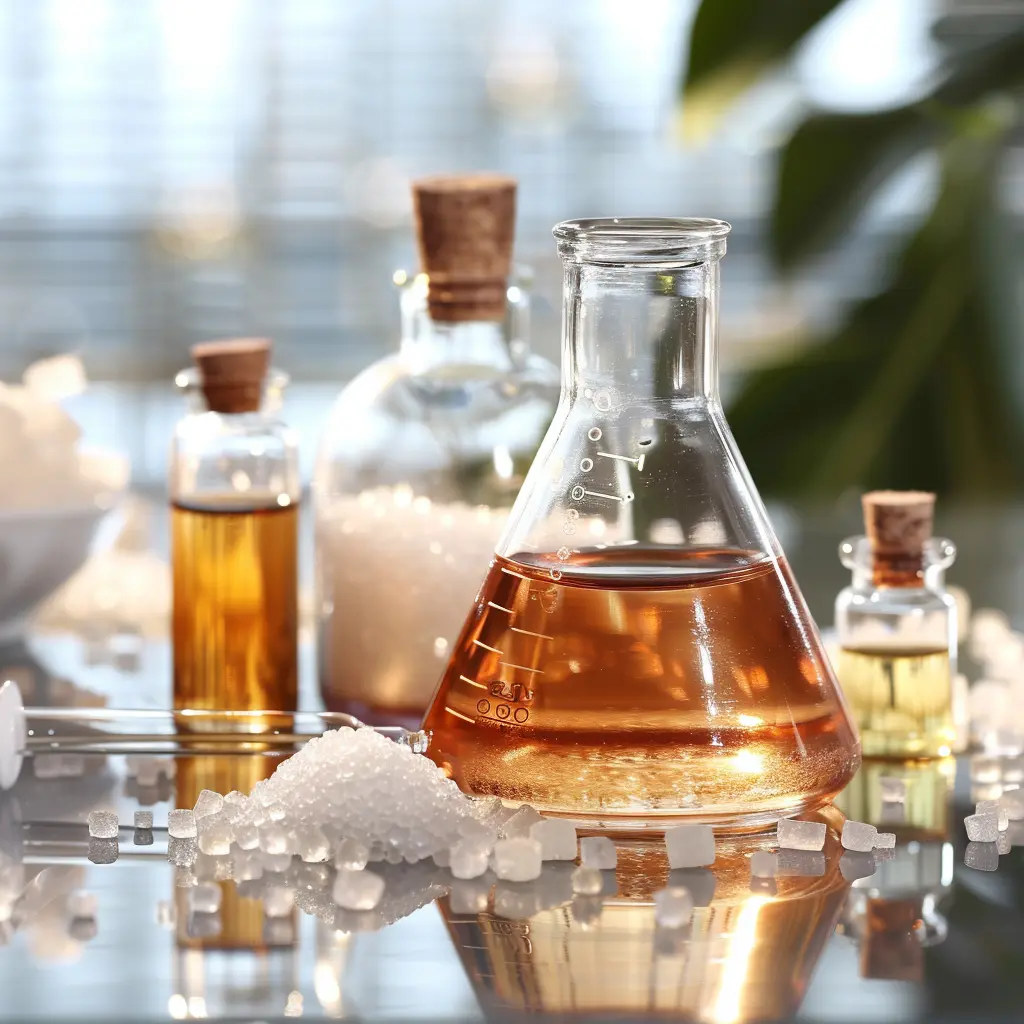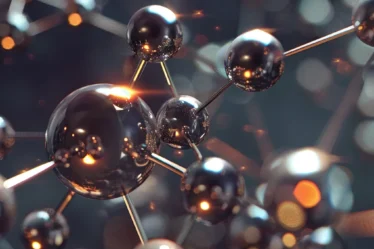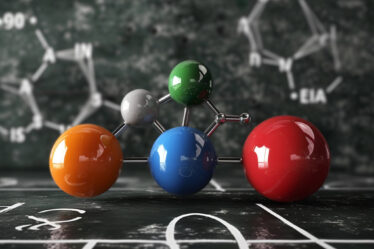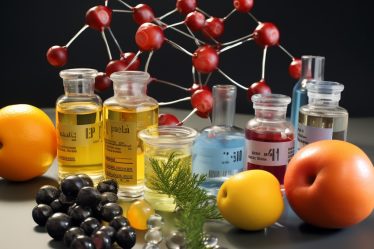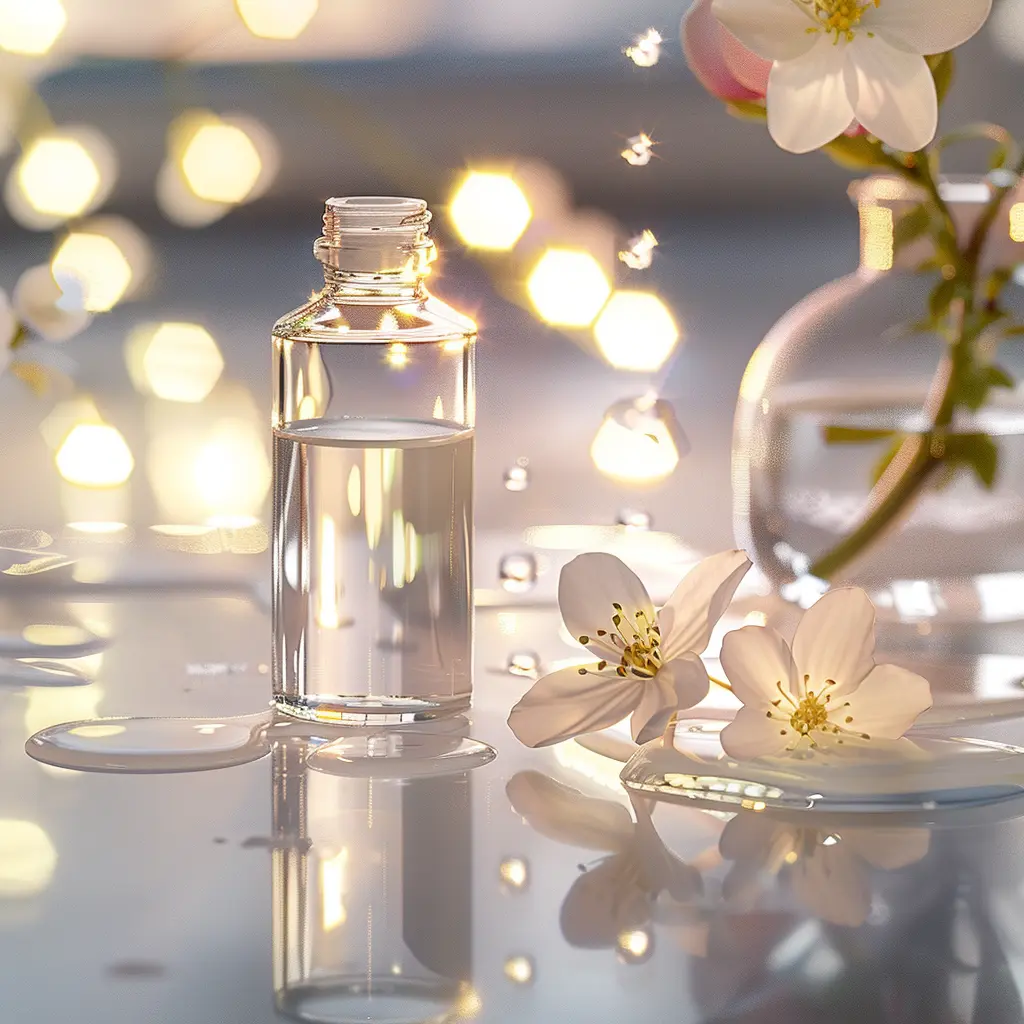
Did you know glycerol, a sweet-tasting, water-attracting compound, is found in everything from food to cosmetics?
With its three hydroxyl groups, this triol participates in key reactions like oxidation and esterification, making it a valuable substance in chemistry and industry.
We will break down glycerol’s molecular structure, explain its chemical properties, and outline its reactions. You’ll also discover how it’s produced naturally from fats and synthetically in laboratories.
Glycerol: Quick Summary
Do you just need the basics? Here’s a simple explanation of what is a glycerol or glycerin:
🟠 Glycerol formula is $CH_2OH{-}CHOH{-}CH_2OH$ or simply $C_3H_8O_3$
🟠 Glycerol, or glycerine, is a triol with three hydroxyl groups, making it highly water-soluble and good at retaining moisture.
🟠 It is made naturally from fats and oils by saponification or hydrolysis and synthetically from propylene derivatives.
🟠 Glycerol reacts in esterification, oxidation, and dehydration to form products like triglycerides, nitroglycerin, and acrolein.
🟠 Its ability to attract water and stay stable makes it useful in food, cosmetics, medicines, and industrial products.
What is Glycerol?
Glycerol, a compound with the formula $C_3H_8O_3$, is a clear, colorless liquid known for its sweet taste and thick, syrupy texture.
Its structure features three hydroxyl ($-OH$) groups attached to a three-carbon backbone, making it highly polar and fully miscible with water. These hydroxyl groups allow glycerol to form hydrogen bonds, giving it unique properties like high boiling point and strong hygroscopicity, meaning it absorbs moisture from the air.
Glycerol is commonly sourced from natural fats and oils, such as those found in plants and animals. During the breakdown of triglycerides in processes like hydrolysis or saponification, glycerol is released as a byproduct. It appears in a wide range of everyday products, including cosmetics, soaps, and low-fat foods, due to its ability to retain moisture and enhance texture.
Chemical Structure of Glycerol
Glycerol is a triol, meaning it has three hydroxyl ($-OH$) groups attached to a three-carbon backbone. These hydroxyl groups make glycerol polar and enable it to form strong hydrogen bonds. Because of this, glycerol mixes easily with water, has a syrupy texture, and resists evaporation. Its structure explains why it retains moisture in foods, cosmetics, and pharmaceuticals.
Glycerol’s Triol Structure
The three hydroxyl groups in glycerol allow it to interact with water and other polar compounds through hydrogen bonding. This interaction makes glycerol fully soluble in water and gives it its thick, syrupy consistency. The same bonds slow down evaporation, making glycerol ideal for use in products that need to retain moisture.
Prochiral Nature of Glycerol
Glycerol is prochiral, meaning it can become chiral when one of its hydroxyl groups is chemically modified. This property allows glycerol to participate in reactions where the spatial arrangement of atoms matters. For example, in the synthesis of triglycerides or pharmaceutical compounds, the ability to create specific configurations is essential.
Stability Through Hydrogen Bonding
The hydrogen bonds in glycerol stabilize the molecule and make it resistant to heat and evaporation. These bonds also help glycerol retain water, a humectant in products like lotions and toothpaste. Glycerol remains stable in various environments, whether part of a chemical reaction or a stored product.
The structure of glycerol is the reason for its versatility. Its ability to dissolve in water, retain moisture, and participate in chemical reactions makes it essential in science, industry, and everyday life.
Chemical Properties of Glycerol
Glycerol has unique physical and chemical properties that stem from its structure, which includes three hydroxyl ($-OH$) groups. These properties explain why glycerol is widely used in chemistry, biology, and industry. Its solubility, viscosity, and reactivity make it an essential compound in many applications.
Solubility and Hydrophilicity
Glycerol mixes with water in any proportion because its $-OH$ groups bond easily with water molecules through hydrogen bonding. This strong interaction makes glycerol hydrophilic. It also absorbs moisture from the air, a property known as hygroscopicity. Because of these features, glycerol keeps foods, cosmetics, and pharmaceuticals moist and stable.
High Boiling Point and Viscosity
With a boiling point of 290°C, glycerol doesn’t evaporate easily. Its syrupy consistency comes from the strong hydrogen bonds between its molecules, making it resistant to flow. These features allow glycerol to function as a stabilizing agent in liquid formulations, such as medicines and syrups.
Reactivity with Acids and Bases
Glycerol reacts with acids to form esters in a process called esterification. For example, combining glycerol with fatty acids produces triglycerides, the main components of fats and oils. When mixed with bases like sodium hydroxide, glycerol undergoes hydrolysis, breaking into smaller compounds. These reactions are foundational in both organic chemistry and industrial processes.
Oxidation and Dehydration Reactions
Oxidizing glycerol with controlled conditions produces compounds like glyceraldehyde and dihydroxyacetone, which are useful in chemical synthesis. Heating glycerol without water causes it to lose water molecules and form acrolein, an important chemical. These transformations show how glycerol’s structure allows it to participate in many reactions, making it versatile for manufacturing and research.
Summary of Physical and Chemical Properties
| Property | Details |
| Molecular Formula | $\text{HOCH}_2\text{CHOHCH}_2\text{OH}$ |
| Boiling Point | 290°C |
| Viscosity | High, syrupy consistency |
| Solubility | Fully miscible with water |
| Hygroscopicity | Absorbs moisture from the air |
| Key Reactions | Esterification, hydrolysis, oxidation, dehydration |
How is Glycerol Produced?
Glycerol is produced naturally through the breakdown of fats and oils and synthetically using chemical processes based on propylene. Both methods are widely used to meet industrial demands, and each has unique advantages depending on the desired purity and cost.
Natural Production from Fats and Oils
Natural glycerol is obtained as a byproduct when triglycerides in fats and oils are broken down. In saponification, fats react with a strong base like sodium hydroxide to produce soap and glycerol. This process is common in soap-making.
Hydrolysis is another method of heating fats with water under pressure, splitting them into fatty acids and glycerol. Common sources of triglycerides are palm oil, soybean oil, and animal fats.
These methods are efficient and widely used in industries such as biodiesel production, where glycerol is a valuable byproduct.
Synthetic Glycerol Production
Synthetic glycerol is produced from propylene, a compound derived from petroleum refining. One method starts by chlorinating propylene to form allyl chloride, which is then converted into epichlorohydrin. Hydrolyzing epichlorohydrin produces glycerol with high purity.
Synthetic methods are more expensive than natural ones but are often chosen when consistent quality is required, such as in pharmaceuticals and cosmetics.
Comparison of Production Methods
| Aspect | Natural Production | Synthetic Production |
| Source | Fats and oils | Propylene derivatives |
| Byproducts | Soap, fatty acids | None (pure glycerol) |
| Cost | Lower | Higher |
| Purity | Variable | High |
| Common Uses | Soap, biodiesel | Pharmaceuticals, cosmetics |
Natural production provides glycerol as a cost-effective byproduct, while synthetic methods ensure high-purity glycerol for specialized applications. Both approaches contribute to making glycerol widely available for industrial and scientific use.
Reactions of Glycerol
Glycerol’s three hydroxyl ($-OH$) groups make it highly reactive in various chemical processes. These reactions produce compounds used in industries like food, pharmaceuticals, and explosives. Key reactions are esterification, oxidation, nitration, and dehydration.
1. Esterification to Form Triglycerides
In esterification, glycerol reacts with fatty acids to form triglycerides. This reaction occurs naturally in living organisms to store energy as fats and oils. In industry, esterification is used to produce biodiesel and edible oils.
Esterification of Glycerol Example
$ \text{Glycerol} + 3\ \text{Fatty Acids} \rightarrow \text{Triglyceride} + 3\ \text{H}_2\text{O} $
Catalysts like sulfuric acid are commonly used to speed up this reaction, while heat ensures the reaction proceeds efficiently.
2. Oxidation to Aldehydes and Acids
Oxidation of glycerol can produce intermediates like glyceraldehyde and dihydroxyacetone, both used in biochemical research. Under stronger conditions, glycerol can also be oxidized to tartaric acid, another valuable compound in organic synthesis.
Oxidation of Glycerol Example
$ \text{Glycerol} + [O] \rightarrow \text{Glyceraldehyde} $
$ \text{Glycerol} + 3[O] \rightarrow \text{Tartaric Acid} $
3. Nitration and Nitroglycerin Formation
When glycerol reacts with concentrated nitric and sulfuric acids, it forms nitroglycerin. This highly exothermic reaction must be carefully controlled.
Nitration of Glycerol Example
$ \text{Glycerol} + 3\ \text{HNO}_3 \rightarrow \text{Nitroglycerin} + 3\ \text{H}_2\text{O} $
Nitroglycerin is widely used in explosives, such as dynamite, and as a medication for heart conditions in small doses.
4. Dehydration to Acrolein
Heating glycerol at high temperatures without water causes dehydration, forming acrolein. Acrolein is a valuable intermediate in producing plastics and other synthetic materials.
Dehydration of Glycerol Example
$ \text{Glycerol} \xrightarrow{\Delta} \text{Acrolein} + \text{H}_2\text{O} $
Glycerol’s hydroxyl groups react differently depending on the conditions, producing substances like triglycerides, nitroglycerin, or acrolein. These reactions show how temperature, catalysts, or oxidizing agents change glycerol into specific compounds.
Safety and Biological Interactions
Glycerol is important in your body’s metabolism. During gluconeogenesis, glycerol converts into glucose, supplying energy when carbohydrate intake is low. In lipid synthesis, glycerol forms the backbone of triglycerides, which store energy in fat cells.
Glycerol is generally considered safe and has low toxicity when used in moderate amounts. However, undiluted or concentrated glycerol can cause skin or eye irritation. Always handle it with care in laboratory settings, using gloves and goggles to avoid direct contact.
Inhalation of glycerol mist may irritate the respiratory system. Proper ventilation and adherence to safety protocols minimize risks. Prolonged or excessive exposure, although uncommon, may lead to dehydration effects due to its hygroscopic nature.
Glycerol in Everyday Products
You’ll find glycerol in many everyday products. In food, it sweetens and preserves items like icing and low-fat snacks. In cosmetics and pharmaceuticals, it keeps lotions, toothpaste, and tablets moist.
Glycerol is also used in antifreeze, e-cigarette liquids, and fog machines. Its ability to attract water, mix easily, and stay stable makes it versatile for many industries.
Advance Your Knowledge of Glycerol
Are you struggling with glycerol and glycerin? You can find more useful topics in our Chemistry blogs. Or find a tutor, who can explain it in a way that clicks for you.
Search for a tutor using phrases like “chemistry tutor Edinburgh” or “chemistry teacher Liverpool” on platforms like meet’n’learn. You’ll find someone who can tailor lessons to your needs.
If you prefer learning in a group, search for “chemistry classes Leeds” or “chemistry lessons London” online. The search will lead you to chemistry tutoring nearby.
Glycerol: Frequently Asked Questions
1. What is glycerol?
Glycerol is a triol compound with the formula $\text{HOCH}_2\text{CHOHCH}_2\text{OH}$, known for its ability to mix with water and retain moisture.
2. How is glycerol produced?
Glycerol is made naturally by breaking fats and oils or synthetically from propylene derivatives.
3. What are the physical properties of glycerol?
Glycerol is a colorless, odorless, syrupy liquid with a high boiling point of 290°C and a sweet taste.
4. What chemical reactions involve glycerol?
Glycerol participates in esterification, oxidation, nitration, and dehydration reactions.
5. Is glycerol safe for consumption?
Glycerol has low toxicity and is generally safe when consumed in moderate amounts.
6. Can glycerol absorb water?
Yes, glycerol is hygroscopic, meaning it attracts and retains water from its surroundings.
7. Where is glycerol commonly found?
Glycerol is present in food, cosmetics, pharmaceuticals, antifreeze, and industrial products.
8. What is glycerol’s molecular structure?
Glycerol has a backbone of three carbon atoms, each attached to a hydroxyl ($-OH$) group.
Sources:
1. LibreTexts Chemistry
2. Britannica
3. Wikipedia
